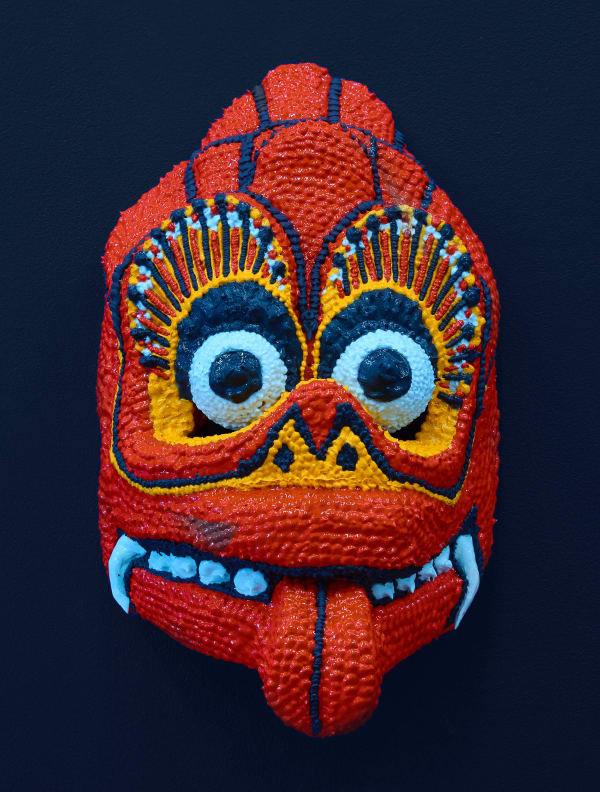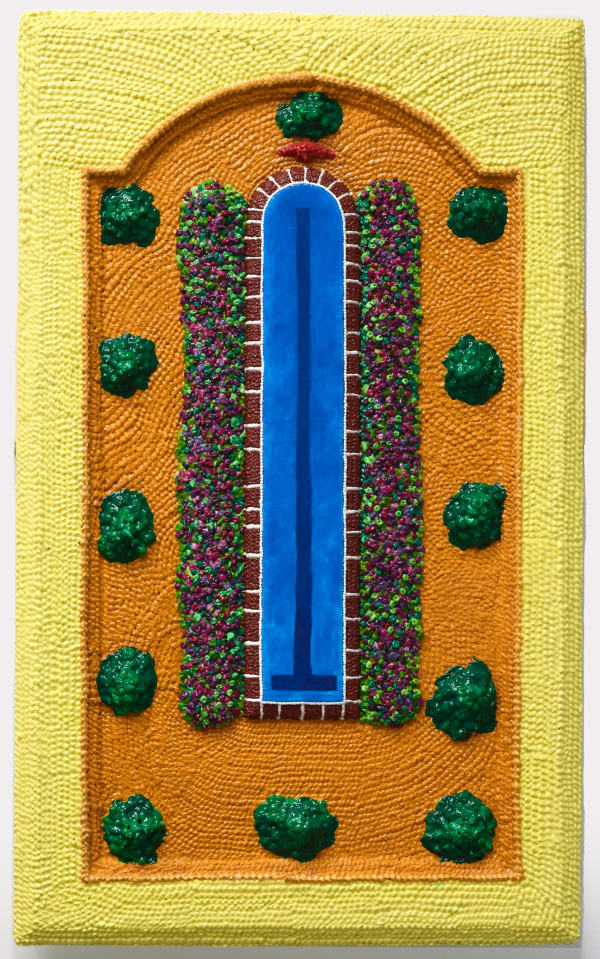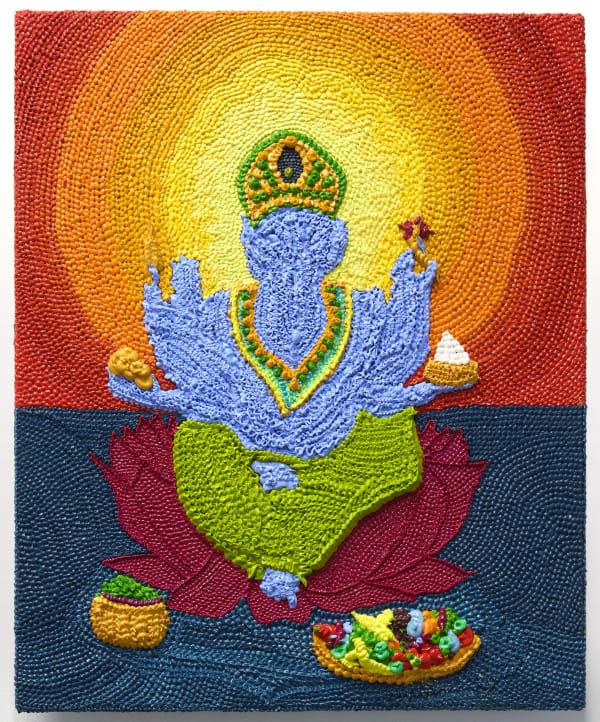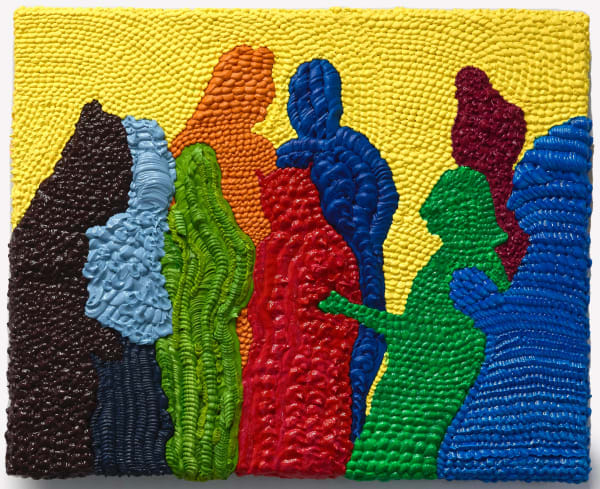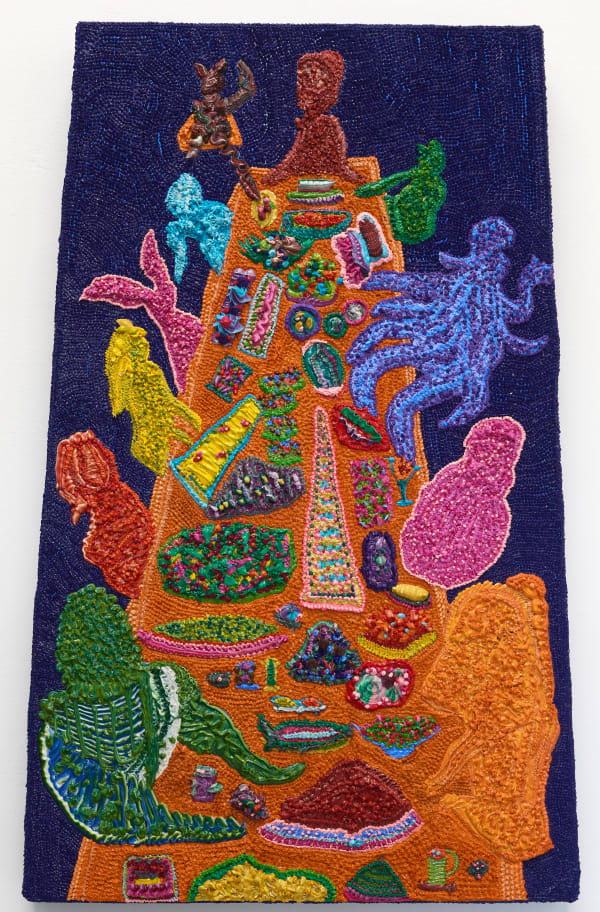Āyubōvan: A solo exhibition by Vishmi Helaratne
Laree Payne is pleased to present Āyubōvan, a solo exhibition comprising recent paintings by Pōneke based Vishmi Helaratne. Exploring themes of identity, adaptation and escapism, Āyubōvan is the visual articulation of the experience of a first generation Sri Lankan migrant, an experience both deeply personal yet acknowledged to be wide and unique.
Vishmi’s paintings may be explained as ‘high relief’, a term usually ascribed to sculptural works when they sit proud of the surface they are on. Each comprised of hundreds if not thousands of small, piped mounds, Vishmi’s paintings are reminiscent of the beaded garments they wore to dance as a child; delightfully and excessively embellished. Ornate in this way, the artist describes their works as ‘relic-like’ and although they are not from an earlier period, the labour involved in creating such work imbues the paintings with a sense of time, and their surface texture, a sense of objecthood. The cumulative effect of the piped mounds is a visual busyness further intensified by the multitude of high saturation colours employed. As the fruit bowl at Ganesha’s folded feet overflows, so do Vishmi’s paintings in their abundance.
Bodies of blue sit centrally within Āyubōvan: the undulating aura emanating from Sādhu, Ganesha’s swirling torso and the linear lanes of the tatākaya (swimming pool). Both Sāhdu and Ganesha, an ascetic and a deity, operate as religious symbols. The tatākaya on the other hand may not carry such an obvious connection to the divine. A competitive swimmer in their formative years, Vishmi fondly refers to the tatākaya as their ‘first friend’. A near silent space once entered, it soon became a sanctuary for regular introspection, a temple of sorts in ever-foreign lands. Demanding commitment and the acceptance of an action to be repeated, Vishmi’s daily return during times of adversity was treated as a practice, and laps swum, their prayers.
And if the swimming pool was a refuge, then the dining table is a fortress. Pot Luck sees a dream of Vishmi's table; a table which heaves with delicacies and is bordered by otherworldly figures deep in spirited conversation. An object ever-welcoming of commune and congregation, the dining table indefinitely unites and in doing so, offers fortitude at times of need. “…comforting their sorrows surrounding confusion, belonging, and despair when nothing else did" the dining table and the tatākaya have posed as temples throughout the artists life.
An exhibition of reflection, longing, dreaming, and seeking Āyubōvan offers a deep dive into a most personal experience, aspects of which may be vaguely familiar to some, well known (friend or foe) to others.

